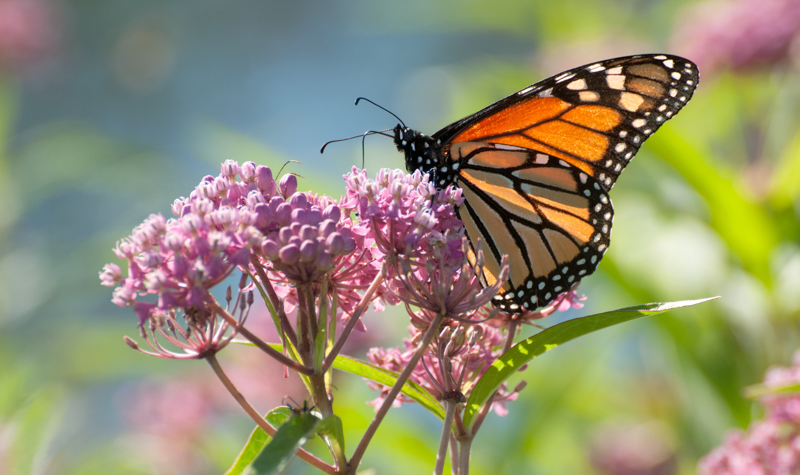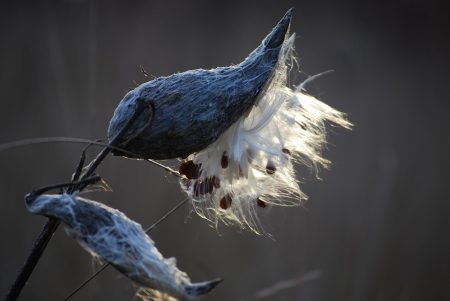 A new U of G study reveals that not all milkweed plants are the same for endangered monarch butterflies looking to lay their eggs.
A new U of G study reveals that not all milkweed plants are the same for endangered monarch butterflies looking to lay their eggs.
A team of researchers has discovered that milkweed plants in farmland have 3 ½ times more monarch butterfly eggs than milkweed growing in urban gardens, natural areas and roadsides. They also found that monarchs prefer small patches of the plant to larger ones.
This study has grabbed national media attention with stories in the National Post, CTV and CBC.
“These findings are significant given that there are currently initiatives under way that involve planting milkweed to help the survival of this butterfly,” said Prof. Ryan Norris, who conducted the study with M.Sc. student and lead author Grace Pitman, and former U of G researcher Tyler Flockhart, now a professor at the University of Maryland. “In some cases, the focus is on roadside planting, which based on these findings is not an ideal location.”
The eastern North American population of monarch butterflies has dropped by 95 per cent in the last 20 years, putting the insect at risk of extinction. Among efforts to save the species, one strategy is to plant more milkweed.
 Published in the journal Biological Conservation, the two-year study surveyed numbers of eggs found on milkweed in various habitats. The researchers discovered the most eggs on milkweed growing on farmland and the fewest on roadside plants.
Published in the journal Biological Conservation, the two-year study surveyed numbers of eggs found on milkweed in various habitats. The researchers discovered the most eggs on milkweed growing on farmland and the fewest on roadside plants.
“Female monarchs are likely attracted to agricultural lands because it is easier for them to locate the milkweed growing there,” said Pitman.
“Monarchs use chemical receptors in their antennae to detect milkweed. It may be easier for them to locate the plant in croplands where it is surrounded by monocultures so there is lower diversity.”
Female monarchs likely prefer smaller milkweed patches because they want to avoid male monarchs, she added.
“The males like to hang out in the larger patches and wait for the females. They tend to harass them, and if the females are looking to lay their eggs, they don’t want to be harassed.”
Norris said it is unclear whether the butterflies simply avoid urban roadsides or whether their eggs fail because of the harsher environment there.

“There are a lot of factors that put the monarchs and their eggs and adult females at risk, including getting hit by cars, road salt and the frequent cutting of vegetation.”
He said organizations should rethink investing in milkweed planting projects along roadsides.
“A more effective strategy would be to develop incentive programs with landowners to plant and maintain milkweed within agricultural landscapes.”
Norris is now studying whether more numerous eggs laid in farmland are leading to more adult monarchs.
Along with PhD student Alana Wilcox and Prof. Amy Newman, he is also examining the impact of neonicotinoid pesticides on eggs and on adults’ migratory behaviour.
“Given that we now know monarchs are laying most of their eggs in agricultural areas, we need to examine what impact factors in this environment, such as neonics, might be having on the butterfly’s survival.”
Contact:
Prof. Ryan Norris
rnorris@uoguelph.ca